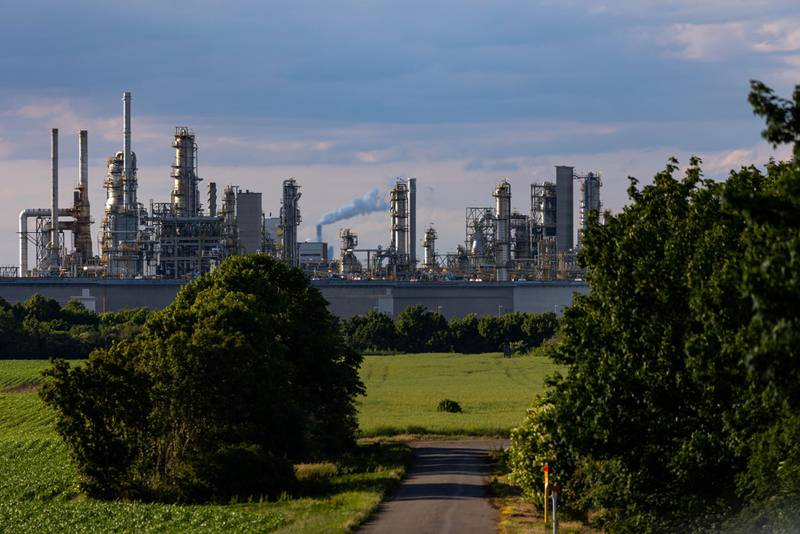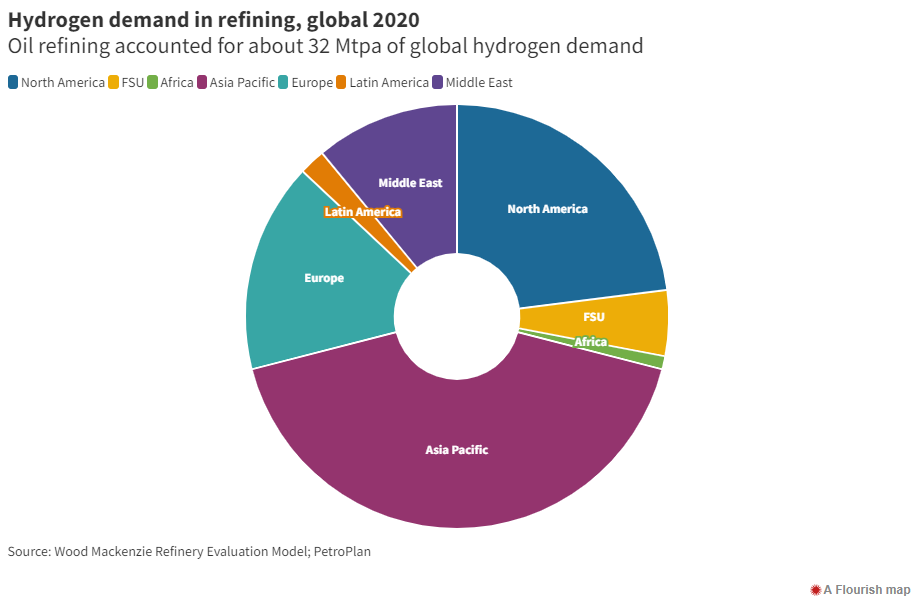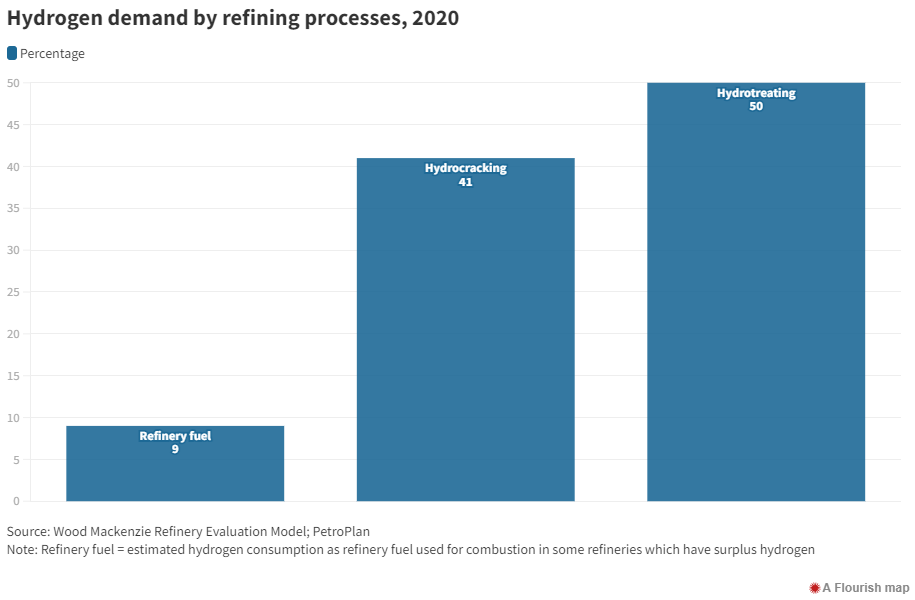
The demand for low-carbon hydrogen, including blue and green forms, in the refining sector could reach 50 million tonnes per annum (Mtpa) by 2050 amid green transition efforts, Wood Mackenzie has said.
Green hydrogen is produced from renewable sources while natural gas produces blue and grey hydrogen. Grey hydrogen is similar process to blue, but the carbon dioxide is not captured, while pink hydrogen is produced through electrolysis from nuclear energy.
Oil refining is one of the largest markets for hydrogen, accounting for about 32 Mtpa, or 30 per cent to 35 per cent of global hydrogen demand in 2020, the consultancy said in a report on Thursday.
Hydrotreating and hydrocracking, processes used to reduce the sulphur content in finished products and to increase the yield of transport fuels, respectively, are the major processes consuming more than 90 per cent of hydrogen in the refining sector.
However, more than 65 per cent of hydrogen demand in refining is met by hydrogen supplied as a by-product from catalytic reformers and ethylene crackers, which is unlikely to be replaced by low-carbon hydrogen, the report said.
Any shortfall in hydrogen demand is met by “on-purpose production” from gas-based steam methane reforming (grey) and coal (brown), together accounting for about 32 per cent of refinery hydrogen demand.
“Low-carbon hydrogen has the potential to replace on-purpose hydrogen as a feedstock if low-carbon hydrogen becomes cost competitive and policy support develops over time,” Wood Mackenzie research director Sushant Gupta said.
“[The] potential global market size for low-carbon hydrogen in this segment could be up to 10 Mtpa by 2050, delivering a 10 per cent or 100 Mtpa reduction in overall scope one and two global refinery carbon emissions.”
However, the real game-changer will be replacing fossil fuels in combustion applications to generate heat and steam, he said.
“This will provide a larger market for low-carbon hydrogen in refining with the potential market size reaching up to 40 Mtpa by 2050, and up to 300 Mtpa or about 25 per cent reduction in carbon emissions. As such, the total potential demand for low-carbon hydrogen in refining could be up to 50 Mtpa by 2050.”
Hydrogen is expected to play a key role in the coming years as economies and industries transition to a low-carbon world to mitigate the effects of climate change.
Globally, the size of the hydrogen industry is expected to hit $183 billion by 2023, up from $129bn in 2017, according to Fitch Solutions. French investment bank Natixis estimates that investment in hydrogen will exceed $300bn by 2030.

The demand for low-carbon hydrogen globally is set to surge to 223 million tonnes by 2050, from less than 1 million tonnes currently, Wood Mackenzie said in an earlier report.
This will be initially driven by ammonia, accounting for 48 per cent of total demand by 2025, followed by the power sector from 2036, which will drive 31 per cent of demand until 2050.
Ammonia is largely used in fertilisers as well as industrial applications including the manufacture of plastics, textiles, pesticides, automotive and cosmetics.
Lower costs and high carbon prices are needed to make low-carbon hydrogen competitive with on-purpose fossil fuel-based hydrogen, the report said.

A much higher carbon price of $100 a tonne to $150 a tonne would be required in the early 2030s to make low-carbon hydrogen compete in the refinery combustion sector.
Alternatively, green hydrogen cost must be below $1.50 a kilogram to compete with gas and fuel oil combustion in the long term.
“In addition to falling costs for low-carbon hydrogen, higher carbon prices, financial incentives and stronger policy support will be necessary to accelerate adoption by the refining sector,” Mr Gupta said.
“Dedicated country hydrogen road maps will help grow low-carbon hydrogen’s penetration across many sectors.”
Refiners will also have to consider additional low-carbon technology such as electric heating, carbon capture and storage on main carbon emitting units, as well as biomass gasification for further decarbonisation of the sector, the report said.
Renewable power and usage of low-carbon feedstocks and products will also help to cut emissions.